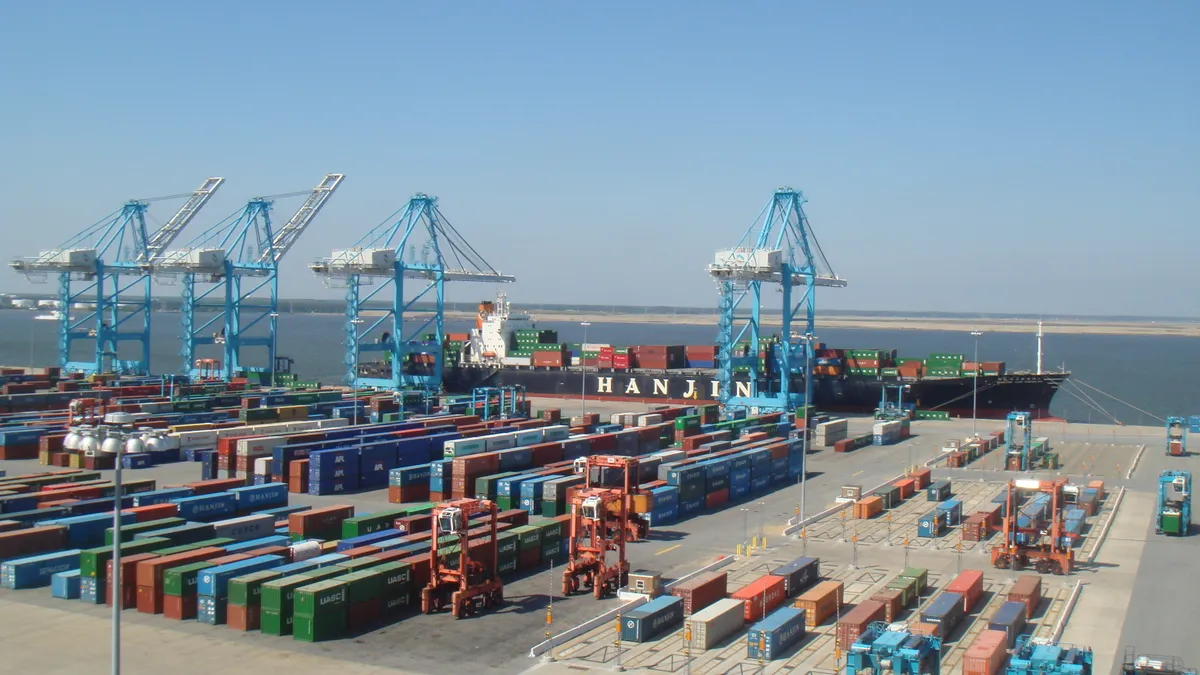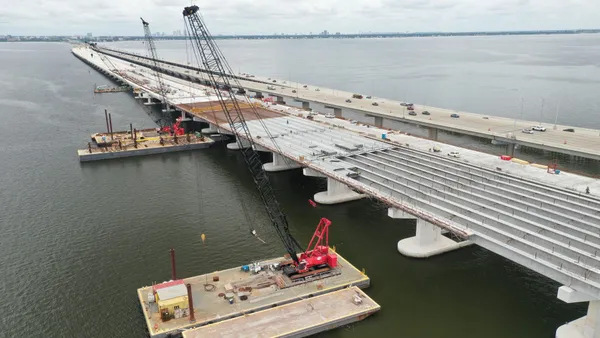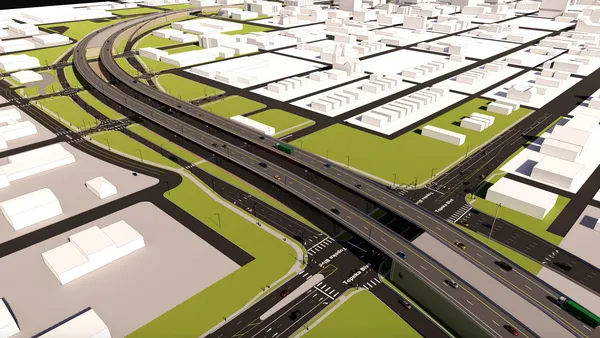Dive Brief:
- In The State of Freight III, the latest report from the American Association of Port Authorities (AAPA) addressing the adequacy of transportation infrastructure in and out of U.S. ports, the association projected a $20 billion investment need for multimodal port and rail access projects during the next 10 years because of growing populations and the increasing volume of goods that need to be moved.
- According to the association's survey, improved and expanded rail access is a priority for ports, with more than 30% reporting that they have identified critical $50-million-plus rail projects. In addition, 77% are planning on-dock, near-dock or other rail access projects in the next decade, as rail provides an "efficient and speedy method of moving cargo out of congested areas to distribution centers."
- There are obstacles, however, to achieving the necessary level of infrastructure investment, according to the association. One hurdle is that out of $11 billion in FAST Act freight funding, only $1.1 billion was allocated to multimodal projects. In addition, ports and their private-industry partners plan to invest $155 billion into port infrastructure during the next five years, although the relevant government entities, in many cases, have not invested in the necessary connections "outside the gates." The association called on the federal government to help eliminate funding and access barriers.
Dive Insight:
The ability to accommodate the larger ships that can now pass through the Panama Canal — after crews completed the expansion of a shipping lane back in 2016 — is one of the driving forces behind U.S. port expansion projects. The Port of Miami was the first U.S. port to be able to handle full loads arriving on these "new Panamax" or "post-Panamax" ships after a $1.3 billion overhaul of its facilities, according to the Miami Herald. This included the installation of new cranes, dredging shipping channels to more than 50 feet deep and the completion of rail projects that now connect the port to nearby rail yards.
Similarly, the Port of Long Beach's $4.5 billion capital plan includes an on-dock rail facility that will allow cargo to be loaded directly onto trains located at marine terminals.
For ports that aren't yet ready to welcome these new, larger ships, Dick Slater, vice president and project executive at Moss, told Construction Dive in August that there are workarounds. Accepting ships with only partial loads, which make the vessels lighter and better able to navigate shallower channels, is one example. But deeper channels, more berth space and a revamp of other port infrastructure is unavoidable for those ports that want to compete in a post-Panamax world.














